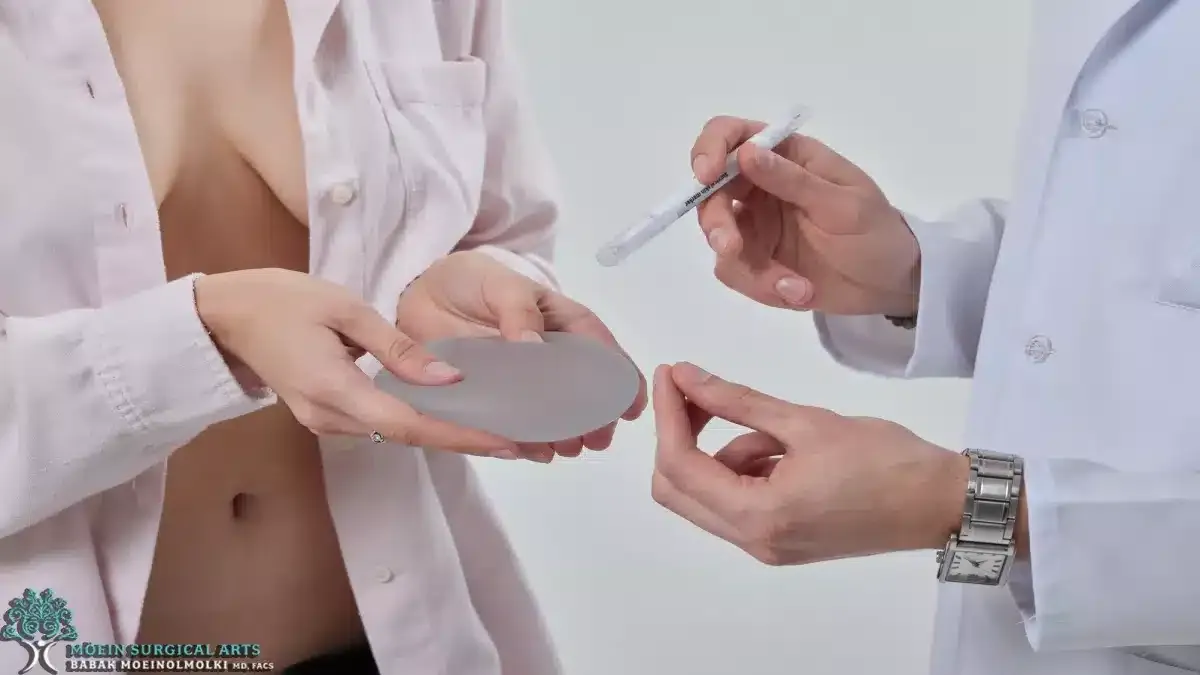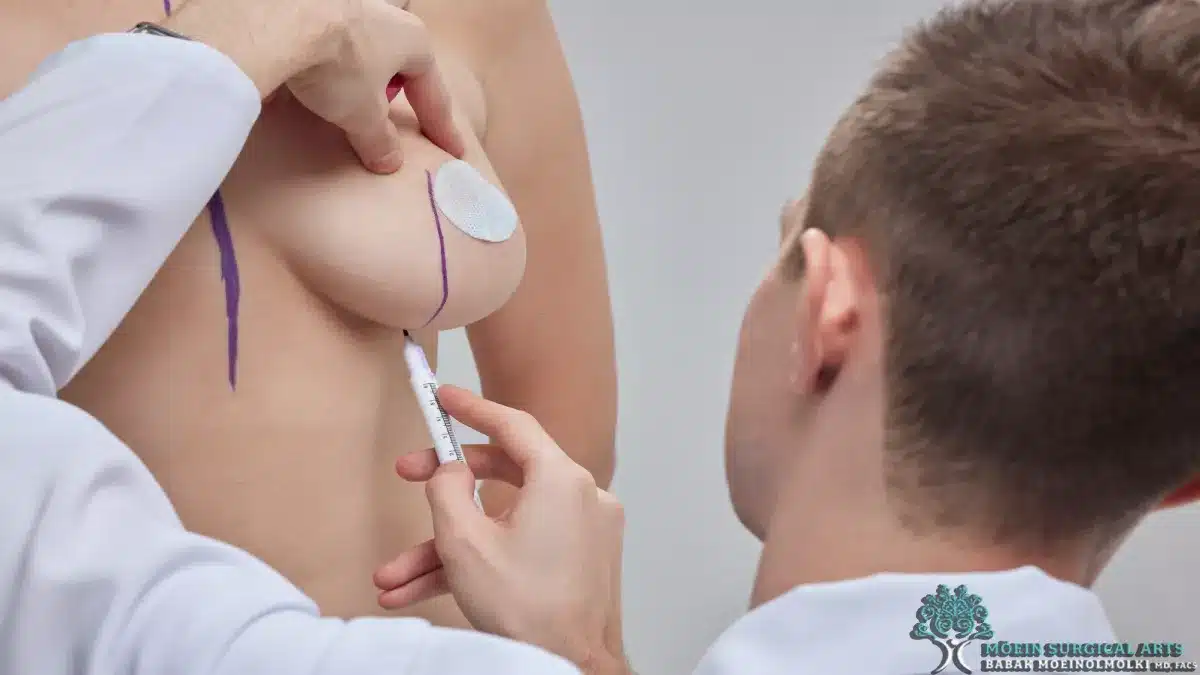
The purpose of breast augmentation recovery is to allow the body to heal and adjust after the surgical procedure. Breast augmentation is an elective surgical procedure that involves the placement of implants to enhance the size and shape of the breasts. During recovery, patients may experience temporary discomfort, swelling, and limitations in their regular activities.
The recovery process typically starts immediately after surgery and can last for a few weeks. During this time, it is important for patients to follow the post-operative instructions provided by their surgeon. This may include wearing a surgical bra or compression garment, taking prescribed medications, and avoiding certain activities that could strain the surgical site.
Several factors can affect the length of recovery time. The type of surgical technique used, such as the placement of implants above or below the muscle, can impact recovery. Additionally, the size and placement of the implants, as well as the patient’s individual healing ability, can influence recovery time.
In conclusion, the purpose of breast augmentation recovery is to allow the body to heal and adjust after the surgical procedure. The recovery process involves following post-operative instructions and can last for a few weeks. Factors such as surgical technique, implant size and placement, and individual healing ability can affect the length of recovery time.

If you are considering getting a breast augmentation, it is important to have a clear understanding of what to expect both during and after the procedure. This article will provide you with an overview of the post-operative phase, outlining the common experiences and changes you may encounter. From the immediate aftermath to the long-term results, knowing what to expect can help you prepare for a smoother and more comfortable recovery journey.
After undergoing breast implant surgery, patients commonly experience a range of sensations and experiences during the first 24 hours. Pain is one of the most prevalent aspects, with many individuals reporting tenderness and discomfort in their chest area. Limited movement is also expected, as the surgical site requires time to heal and regain strength. This might result in difficulties performing everyday activities, such as reaching or lifting heavy objects. Dizziness can occasionally be experienced due to the anesthesia and the body’s reaction to surgery. Fatigue is another common sensation during this period, as the body goes through the healing process.
Rest and following the doctor’s orders for painkiller use are of utmost importance during the first 24 hours after breast implant surgery. Resting allows the body to recover more efficiently and helps minimize swelling and discomfort. By following the doctor’s instructions for painkiller use, patients can manage the pain more effectively and ensure a more comfortable recovery. It is crucial to avoid self-medicating or straying from the prescribed dosage to prevent adverse effects or potential complications.
To prepare for heading home after surgery, it is recommended to arrange for a caregiver to assist with daily tasks and provide support during the initial recovery period. Having a comfortable recovery area is essential, complete with plenty of hydration, snacks, and entertainment to keep the patient relaxed and occupied during their rest. Ensuring the recovery area is convenient and accessible will also help minimize movement while recovering, allowing the body to focus on healing.
In conclusion, the first 24 hours after breast implant surgery can encompass experiences such as pain, limited movement, dizziness, and fatigue. By prioritizing rest, following the doctor’s orders for painkiller use, and making appropriate preparations for heading home, patients can optimize their recovery and attain the best possible outcomes.
The first 48 hours after breast augmentation surgery are crucial for a proper recovery. Following the necessary steps during this period can help minimize discomfort and ensure a smooth healing process.
Rest is essential during the initial hours after surgery. Patients should avoid any strenuous activities and take adequate time off from work and other responsibilities. It is recommended to sleep upright in a reclining position to reduce swelling and promote proper blood circulation to the breasts.
Alongside rest, proper hydration is key. Drinking plenty of water helps flush out toxins from the body and aids in the healing process. Water also helps keep the body hydrated, which is essential for overall recovery.
Pain management is another critical aspect of the first 48 hours after breast augmentation surgery. Surgeons often prescribe pain medications to alleviate any discomfort. It is vital to take these medications as directed and not skip dosage. Additionally, using ice packs on the surgical sites can help reduce swelling and provide temporary relief.
Having a caregiver present during the initial recovery period is highly recommended. They can assist with household chores, meal preparation, and childcare, allowing the patient to focus on resting and healing. Moreover, the presence of a caregiver provides peace of mind for the patient, knowing that they have someone there to support them physically and emotionally.
In conclusion, the first 48 hours after breast augmentation surgery require strict adherence to specific guidelines. Rest and proper hydration, coupled with effective pain management, are vital for a successful recovery. Having a caregiver present ensures the patient’s comfort and enables them to focus on their healing journey.
After undergoing surgery, the 5 to 7 days post-op period is often marked by a steady improvement in the patient’s recovery status. During this time, individuals can expect a decrease in pain intensity and a gradual return to normal activities, with the exception of strenuous actions.
As the body begins to heal, the pain experienced immediately after the surgery tends to subside. This decrease in pain intensity is a reassuring sign that the healing process is progressing as expected. However, it is important to note that some discomfort may still be present, but it should be more manageable and easily controlled with prescribed pain medications.
In terms of activities, patients are generally able to resume their normal daily routines during this period. Simple tasks such as walking, light housework, and working from home can be comfortably undertaken. Activities that were prohibited in the immediate post-operative period, such as driving or lifting heavy objects, may now be cautiously reintroduced. However, it is crucial to avoid engaging in strenuous actions that could jeopardize the healing process or cause undue stress on the surgical area.
Overall, the 5 to 7 days post-op period signifies a positive step forward in the recovery journey. The decreasing pain allows patients to regain their independence and become more active, albeit within certain limitations. By following the prescribed guidelines and avoiding strenuous actions, individuals can continue on their path to a full and successful recovery.

At the 3 to 4-week post-operative stage, significant progress can be expected in terms of pain reduction, swelling reduction, and bruise resolution. As the body continues to heal, the level of discomfort experienced after surgery becomes significantly reduced. Patients may experience slight tenderness or discomfort, but it is expected to be manageable and easily controlled with pain medication.
Swelling, which is commonly experienced post-surgery, should also significantly decrease during this period. The body’s natural healing process helps to absorb excess fluid and reduce inflammation, leading to a more comfortable recovery. Likewise, bruising that typically occurs after surgery gradually fades away, leaving the skin looking more rejuvenated.
After obtaining medical clearance, patients may be advised to engage in light exercises at this stage. These exercises can help improve blood circulation, promote healing, and enhance mobility. However, it is essential to follow the specific instructions provided by the surgeon to avoid any complications or setbacks in the recovery process.
Wearing post-surgical bras during the healing stage is crucial for optimal recovery. These bras are specially designed to provide support, compression, and stability to the surgical area. By wearing them consistently, the breasts are protected from excessive movement, which can impede the healing process and cause discomfort. Additionally, post-surgical bras help to reduce the risk of complications such as fluid accumulation and implant displacement.
In conclusion, by the 3 to 4-week post-operative stage, patients can anticipate a reduction in pain, swelling, and bruising, allowing for increased comfort. Introduction of light exercises may be possible under medical guidance. The continued use of post-surgical bras plays a significant role in ensuring proper healing and minimizing complications.
It is of utmost importance for patients who have undergone breast implant surgery to schedule an appointment with their surgeon for a full evaluation at around 4 to 6 weeks post-operation. This appointment serves as a crucial step in the recovery process, allowing the surgeon to assess the progress and ensure the implants are settling properly.
During this evaluation, the surgeon will carefully examine the breasts to ascertain that they have developed a more natural look and feel. At this point in the recovery journey, patients can anticipate a significant improvement in the appearance of their breasts compared to the immediate post-operative stage. The breasts should be gradually softening and taking on a more natural shape, moving away from the initial tightness and swelling. The skin around the incisions should also be healing, with any scars starting to fade.
Most patients will have fully recovered and achieved a more natural look and feel by the 4 to 6-week mark. However, it is important to note that individual recovery timelines may vary. It is normal for some degree of asymmetry or slight discomfort to persist during this period, but these issues should be discussed with the surgeon during the evaluation appointment.
By attending this appointment, patients can ensure that they are progressing well and that any concerns or complications can be promptly addressed. The surgeon’s expertise and evaluation are vital in providing reassurance and ensuring optimal long-term results for patients following breast implant surgery.

Taking care of oneself is essential for overall well-being and maintaining a healthy lifestyle. Whether you are looking to prevent illness, recover from an ailment, or simply promote self-care, there are various ways to prioritize your health within the comfort of your own home. From maintaining a nutritious diet to establishing a regular exercise routine, practicing good hygiene to managing stress levels, this article will explore effective methods to care for yourself at home. By incorporating these strategies into your daily life, you can enhance your physical, mental, and emotional well-being, ensuring a higher quality of life and a happier, healthier you.
Maintaining a proper diet post-surgery is of utmost importance as it not only aids in the healing process but also ensures a speedy recovery. The foods you consume in the days following a surgical procedure play a vital role in providing the necessary nutrients and supporting your body’s immune system. To support a healthy recovery, it is crucial to consume the right types of foods that are gentle on your digestive system.
After undergoing surgery, it is advised to opt for bland and low-fat food options. These include plain rice, broiled chicken, toast, and yogurt. These foods are easily digestible and are less likely to irritate your stomach or cause discomfort. Additionally, they are rich in essential nutrients, such as protein, vitamins, and minerals, which are vital for tissue repair and immune function.
Alongside consuming nutritious foods, it is equally important to maintain proper hydration by drinking ample fluids. Fluid intake helps to prevent dehydration, aids in the elimination of toxins from the body, and supports the healing process. Additionally, after surgery, it is common to experience irregular bowel movements due to various factors like medication, anesthesia, or changes in diet. To alleviate this issue, drinking plenty of fluids, such as water, herbal tea, and clear broths, can help regulate bowel movements and promote digestive health.
In summary, maintaining a balanced diet of bland, low-fat foods alongside proper fluid intake is crucial for a healthy recovery after surgery. By paying attention to your diet and fluid consumption, you can support the healing process, reduce digestive discomfort, and ensure a smooth road to recovery.
Medications play a vital role in the successful post-surgery recovery process. They are essential in managing pain, preventing complications, and promoting healing. In this section, we will discuss the significant role medications play in recovery and the importance of following instructions provided by healthcare professionals.
Prescribing and providing instructions for taking medications is an integral part of a doctor’s responsibility during the post-surgery recovery period. Pain relievers are commonly prescribed to alleviate discomfort and facilitate mobility. It is crucial to take them as directed by the doctor to manage pain effectively without compromising overall wellness.
In certain cases, blood thinners may be prescribed to prevent blood clots, which pose a risk after surgery. These medications help maintain the blood’s optimal consistency, reducing the likelihood of blockages in blood vessels. Adhering to the prescribed dosage and schedule is vital to ensure their effectiveness and minimize potential complications.
Additionally, antibiotics are often prescribed to prevent infections, which can significantly impede the healing process. Following the doctor’s instructions when taking antibiotics is crucial for eliminating bacteria and reducing the risk of post-surgical infections.
Conclusion:
Medications are indispensable in the post-surgery recovery process. Prescribed pain relievers, blood thinners, and antibiotics play a critical role in managing pain, preventing complications, and promoting optimal healing. Adhering to the doctor’s instructions when taking medications is essential for a successful recovery. By doing so, patients can ensure the medications are effective and minimize potential risks, ultimately facilitating a smooth and speedy recovery.
Proper care for an incision is crucial for the healing process. Here are the steps to take care of an incision, including wearing a tight elastic bandage, transitioning to a special bra, and when it’s safe to wear an underwire bra.
1. Wearing a tight elastic bandage:
When instructed by the healthcare provider, apply a tight elastic bandage over the incision area. The bandage should provide gentle compression and support to reduce swelling and promote healing. Make sure not to wrap the bandage too tightly, as it can impede circulation and hinder the healing process.
2. Transitioning to a special bra:
After a few days or as advised by your doctor, transition to a special bra designed for post-surgical care. These bras are often made of soft, breathable fabric and provide adequate support without putting pressure on the incision. Follow the healthcare provider’s instructions on when to switch to this type of bra.
3. Safe use of underwire bra:
Avoid wearing an underwire bra until the incision is completely healed. Underwires can apply pressure on the incision site, leading to discomfort, irritation, or delay in healing. Consult with your doctor to determine when it is safe to wear an underwire bra again.
4. Washing the area daily:
Gently wash the incision area daily with mild soap and lukewarm water. Avoid using harsh products such as alcohol or hydrogen peroxide as they can irritate the incision site. Pat the area dry with a clean, soft towel.
5. Cleaning with a drain:
If you have a drain near the incision site, clean the area as instructed by your healthcare provider. This typically involves gently cleaning the drain and the skin around it with a saline solution or prescribed antiseptic solution.
It is important to consistently follow these care instructions to promote proper healing and avoid complications. Wearing a larger bra helps prevent pressure and discomfort on the healing incision, while washing the area daily maintains cleanliness and reduces the risk of infection. Remember to consult with your healthcare provider for specific care instructions tailored to your individual needs.

Exercise is an essential component of post-surgery recovery. It not only helps boost blood flow but also plays a crucial role in preventing complications such as pneumonia and constipation. Therefore, engaging in the right forms of exercise is important for the overall well-being of individuals recovering from surgery.
However, it is essential to remember that there are certain activities that should be avoided until cleared by a doctor. These activities include bicycle riding, jogging, weight lifting, and any form of aerobic exercise that puts strain on the body. These high-intensity activities may put unnecessary stress on the healing body and delay the recovery process.
The timeline for resuming exercise after surgery varies depending on the individual and the type of surgery. In general, gentle walking is a recommended activity to begin the day after surgery. This helps stimulate blood flow and promote healing without straining the body excessively. As the recovery progresses, individuals can gradually increase the intensity and duration of their walks.
Within 6-8 weeks post-surgery, most individuals can resume more strenuous activities such as light aerobic exercise, strength training, and moderate-intensity workouts. However, it is important to always consult with a doctor or physical therapist before advancing to more vigorous exercises to ensure the body is fully ready.
In conclusion, walking is an integral part of post-surgery recovery as it improves blood flow and aids in the prevention of pneumonia and constipation. By adhering to the recommended timeline and avoiding certain activities, individuals can safely resume exercise and regain their strength and overall fitness.
In conclusion, the recovery period following breast augmentation surgery is a crucial time that must be handled with care. Post-surgical care is of utmost importance during this phase, as it directly affects the overall outcome of the procedure. Patients must diligently follow their surgeon’s instructions and seek medical guidance when necessary for a smooth recovery.
There are various factors that can impact the duration of the recovery time for each individual. These factors include the type of implant used, the surgical technique employed, and the patient’s overall health status. It is essential for patients to be aware that the recovery timeline is unique to each individual and can vary.
On average, the recovery period for most breast augmentation patients ranges from a few weeks to a few months. It is important to note that during this time, patients may experience certain limitations such as temporary discomfort, swelling, and restricted physical activities. It is crucial to adhere to these limitations to promote optimal healing and avoid complications.
It is imperative for patients to understand that their recovery journey is a personal and individualized one. While some individuals may recover faster, others may require additional time to heal fully. Consulting with a qualified Cosmetic Surgeon and adhering to their personalized recovery plan is key to achieving a successful breast augmentation outcome. The recovery process should not be rushed, as it is a vital time for the body to heal and adjust to the changes made during surgery.
In the end, the recovery phase following breast augmentation is essential for achieving optimal results. Proper post-surgical care, understanding the factors that affect recovery time, recognizing the average recovery period, acknowledging the limitations, and appreciating the individualized recovery timeline all contribute to a successful and satisfactory outcome.